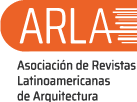Aplicación del método de Diseño Generativo en el sector de la construcción en el marco de los Objetivos de Desarrollo Sostenible
DOI:
https://doi.org/10.51372/gacetatecnica261.5Palabras clave:
objetivos de desarrollo sostenible, ODS, arquitectura ingeniería y construcción, AEC, sostenibilidad, modelado de información de construcción, BIM, diseño generativoResumen
Las Organización de las Naciones Unidas desde el 2015, se propone para el manejo a nivel mundial los Objetivos de Desarrollo Sostenible, y específicamente en el sector construcción correspondiendo al objetivo 11, los profesionales del sector arquitectura, ingeniería y de la construcción tienen un papel crucial en este contexto, dado que es responsable del diseño, construcción y mantenimiento del entorno construido, lo que implica un impacto significativo en varios indicadores de sostenibilidad. Sin embargo, enfrenta desafíos complejos, especialmente en países como Venezuela, donde problemas multidisciplinarios dificultan el avance hacia estos objetivos. Pero es de observar, que el avance en el uso de la digitalización e implementación de tecnologías innovadoras son vistas como soluciones clave para mejorar la sostenibilidad en dichas áreas. El uso de herramientas como el Modelado de Información de Construcción, y el Diseño Generativo se presenta como una estrategia para optimizar el diseño arquitectónico y estructural, permitiendo una mejor integración de la sostenibilidad desde las etapas iniciales de los proyectos. En este documento abordado como una investigación de tipo documental, se concluye que la combinación de Building Information Modeling y el Diseño Generativo puede facilitar la creación de soluciones de diseño más eficientes y sostenibles, alineadas con los Objetivos de Desarrollo Sostenible, promoviendo así un entorno construido más responsable y resiliente
Descargas
Citas
A. Gade y M. Madsen, “Early prioritization of the United Nation's goals for sustainable development in construction projects” IOP Conference Series: Earth and Environmental Science, 588. doi:10.1088/1755-1315/588/5/052054, 2020
R. Horry, C.A. et al., “Environmental management systems in the architectural, engineering and construction sectors: a roadmap to aid the delivery of the sustainable development goals”, Environ Dev Sustain 24, 10585–10615, doi:10.1007/s10668-021-01874-3, 2022
J Bernegger, et al., “A new method combining BIM and GIS data to optimise the sustainability of new construction projects in Switzerland” IOP Conference Series: Earth and Environmental Science, 1122 012052, doi:10.1088/1755-1315/1122/1/012052, 2022
P. Mansell, S. Philbin, T. Broyd y I. Nicholson, “Assessing the Impact of Infrastructure Projects on Global Sustainable Development Goals”, LONDON SOUTH BANK UNIVERSITY ICE Publishing. doi:10.1680/jensu.19.00044, 2019
A. Ammar, M. Hatoum, H. Nassereddine, y G. Dadi, “Synergies Between Construction 4.0 Technologies and Sustainable Construction: A Bibliometric Analysis” Conference: Creative Construction e-Conference, 365-370, doi:10.3311/CCC2022-046, 2022
C. Fagone, M. Santamicone, y V. Villa, “Architecture Engineering and Construction Industrial Framework for Circular Economy: Development of a Circular Construction Site Methodology”, Sustainability, 15, 1-23. doi:10.3390/su15031813, 2023
L. Ospina, et al., “Estimating networks of sustainable development goals” Information & Management, 59, 1-15. doi:10.1016/j.im.2020.103342, 2022
S. Goubran, y C. Cucuzzella, “Integrating the Sustainable Development Goals in Building Projects”. Journal of Sustainability Research, 1, 1-43, doi:10.20900/jsr20190010, 2019
S. Goubran, “On the Role of Construction in Achieving the SDGs”, Journal of Sustainability Research, 1, 1-52. doi:10.20900/jsr20190020, 2019
I. Bertin, et al. “A BIM-Based Framework and Databank for Reusing Load-Bearing Structural Elements”, Sustainability, 12, 1-24. doi:10.3390/su12083147, 2020
L. Pietrosemoli, C. Rodríguez, y Y. Nuñez, “Venezuela: Construction problems and sustainable construction. Collecting data to put the puzzle together. Part 1”, AdvBuildEdu, vol. 6, no. 1, pp. 63–79, doi:10.20868/abe.2022.1.4815, 2022
O. Kaplinski, “Architectural, Civil, and Infrastructure Engineering in View of Sustainability: Editor’s Comment”, Sustainability, 15, 1-7. doi:10.3390/su15075967, 2023
R. Jiao, J. Luo, J. Malmqvist, y J. Summers, “New design: opportunities for engineering design in an era of digital transformation”, Journal of engineering design, 33(10), 685–690. doi:10.1080/09544828.2022.2147270, 2022
Z. Alwan, et al., “Framework for parametric assessment of operational and embodied energy impacts utilizing BIM”, Journal of Building Engineering, 42, 1-15. doi: 10.1016/j.jobe.2021.102768, 2022
E. Frangedaki, et al., “Optimisation-driven design in the architectural, engineering and construction industry”, Proceedings of the Institution of Civil Engineers – Structures and Buildings, 1-12. doi:10.1680/jstbu.22.00032, 2022
R. Rooshdi, N. Ismail, S. Sahamir, y M. Marhani, “Integrative Assessment Framework of Building Information Modelling (BIM) and Sustainable Design for Green Highway Construction: A Review”, Chemical Engineering Transactions, 55-60. doi:10.3303/CET2189010, 2021
N. McGlashan, et al., “Sustainability Certification Systems as Goals in a Generative Design System”, Society for Modeling & Simulation International (SCS) (págs. 1-10). April 15-17: SimAUD, 2021
R. Yu, N. Gu, y M. Ostwald, “Architects’ Perceptions about Sustainable Design Practice and the Support Provided for This by Digital Tools: A Study in Australia”, Sustainability, 14, 1-18. doi:10.3390/su142113849, 2022
K. Patel, y R. Ruparathna, “Life cycle sustainability assessment of road infrastructure: a building information modeling-(BIM) based approach”, International Journal Of Construction Management, 1-10. doi:10.1080/15623599.2021.2017113, 2021
N. Kallioras y N. Lagaros, “MLGen: Generative Design Framework Based on Machine Learning and Topology Optimization” Appl. Sci, 11, 1-17. doi:10.3390/app112412044, 2021
UNESCO, “UNESCO Publications”, UNESCO Publications, Disponible en: https://unesdoc.unesco.org/ark:/48223/pf0000380063, 2021
A. Klarin y Q. Xiao, “Automation in architecture, engineering and construction: a scientometric analysis and implications for management”, Engineering, Construction and Architectural Management, doi:10.1108/ECAM-08-2022-0770, 2023
V. Tomei, et al., “Generative design of mega-structures: A structural grammar approach”, Structures and Architecture, 1169-1179. doi:10.1201/9781003023555-140, 2022
G. Bastos, et al., “Interoperability between Building Information Modelling (BIM) and Building Energy Model (BEM)” Appl. Sci, 11, 1-20. doi:10.3390/app11052167, 2021
N. Korqa, “Generative design for BIM Its Influence in the Design Process”, Tecnico Lisboa, Disponible en https://fenix.tecnico.ulisboa.pt/downloadFile/563345090414087/ExtendedAbstract.pdf, 2015
L. Quispe, “Application of BIM Tools in Parametric and Generative Design for the Conception of Complex Structures”, IOP Conf. Series: Materials Science and Engineering, 1-11. doi:10.1088/1757-899X/1203/2/022070, 2021
S. Pibal, K. Khoss, y I. Kovacic, “Framework of an algorithm-aided BIM approach for modular residential building information models”, International Journal of Architectural Computing, 20(4), 777–800. doi:10.1177/14780771221138320, 2022
C. Sydora y E. Stroulia, “Poster Abstract: Generative Interior Design using BIM”, Proceedings of The 6th ACM International Conference on Systems for Energy-Efficient Buildings, Cities, and Transportation, New York, 354-355. doi:10.1145/3360322.3360997, 2019
P. Shrestha, et al., “Generative Design Approach For Product Development”, The 7th International Conference on Engineering, Applied Sciences and Technology, 1-9. doi:10.1063/5.0065031, 2021
S. Abrishami, et al., “Generative BIM workspace for AEC conceptual design automation: prototype development” Engineering, Construction and Architectural Management, doi:10.1108/ECAM-04-2020-0256, 2020
J. Mukkavaara y M. Sandberg, “Architectural Design Exploration Using Generative Design: Framework Development and Case Study of a Residential Block”, Buildings, 10, 1-17. doi:10.3390/buildings10110201, 2020
I. Caetano, L. Santos, y A. Leitao, “Computational design in architecture: Defining parametric, generative, and algorithmic design”, Frontiers of Architectural Research, 9, 287-300. doi: 10.1016/j.foar.2019.12.008, 2019
D. Sedzicki, et al., “Computer-Aided Automated Greenery Design—Towards a Green BIM”, Sustainability, 14, 1-20. doi:10.3390/su14148927, 2022
S. BuHamdan, A. Alwisy, y A. Bouferguene, “Generative systems in the architecture, engineering and construction industry: A systematic review and análisis”, International Journal of Architectural Computing, 1-24. doi:10.1177/147807712093412, 2020
I. Paduano, A. Mileto, y E. Lofrano, “A Perspective on AI-Based Image Analysis and Utilization Technologies in Building Engineering: Recent Developments and New Directions”, Buildings, 13, 1-15. doi:10.3390/buildings13051198, 2023
G. Acosta, J. Alcaide, y J. Diego, “Evolution and future trends in generative product design”, Proceedings of DARCH 2022 2nd International Conference on Architecture & Design, 74-85, Disponible en: https://www.ocerints.org/darch22_e-publication/papers/Gonzalo%20Acosta%20Zazueta2.pdf, 2022
Mukkavaara, J. (2021). Exploration and Optimization of Building Design Solutions using Computational Design. Luleå: Luleå University of Technology, Department of Civil, Environmental and Natural Resources Engineering. Obtenido de www.ltu.se/shb
S. Abrishami, et al., “Virtual Generative BIM Workspace for Maximising AEC Conceptual Design Innovation: A Paradigm of Future Opportunities” Construction Innovation, 15(1), doi:10.1108/CI-07-2014-0036, 2015
ANSI/AISC 360-10, “Especificación ANSI/AISC 360-10 para Construcciones de Acero”, Basado en “Specification for Structural Steel Buildings” (estándar nacional estadounidense ANSI/AISC 360-10), American Institute of Steel Construction (AISC), Chile, 2010
Green Building Council, “LEED Reference Guide for Building Design and Construction”, V4 Textbook Binding, U.S. Green Building Council, 2013
K. Deb et al., “A fast and elitist multiobjective genetic algorithm: NSGA-II”, Technical report, Indian Institute of Technology, Kanpur: Kanpur Genetic Algorithms Laboratory (KanGAL), Vol 15, 2000
R. Pérez, “Construcción 4.0 y sus cuatro pilares tecnológicos fundamentales”, Blog de Hiberus, Disponible en: https://www.hiberus.com/crecemos-contigo/construccion-4-0-y-sus-cuatro-pilares-tecnologicos-fundamentales/, 2020

Publicado
Cómo citar
Número
Sección

Está obra está bajo licencia Creative Commons Attribution-NonCommercial-ShareAlike 4.0 International License.
Las opiniones expresadas por los autores no necesariamente reflejan la postura del editor de la publicación ni de la UCLA. Se autoriza la reproducción total o parcial de los textos aquí publicados, siempre y cuando se cite la fuente completa y la dirección electrónica de esta revista. Los autores(as) tienen el derecho de utilizar sus artículos para cualquier propósito siempre y cuando se realice sin fines de lucro. Los autores(as) pueden publicar en internet o cualquier otro medio la versión final aprobada de su trabajo.






.png)




